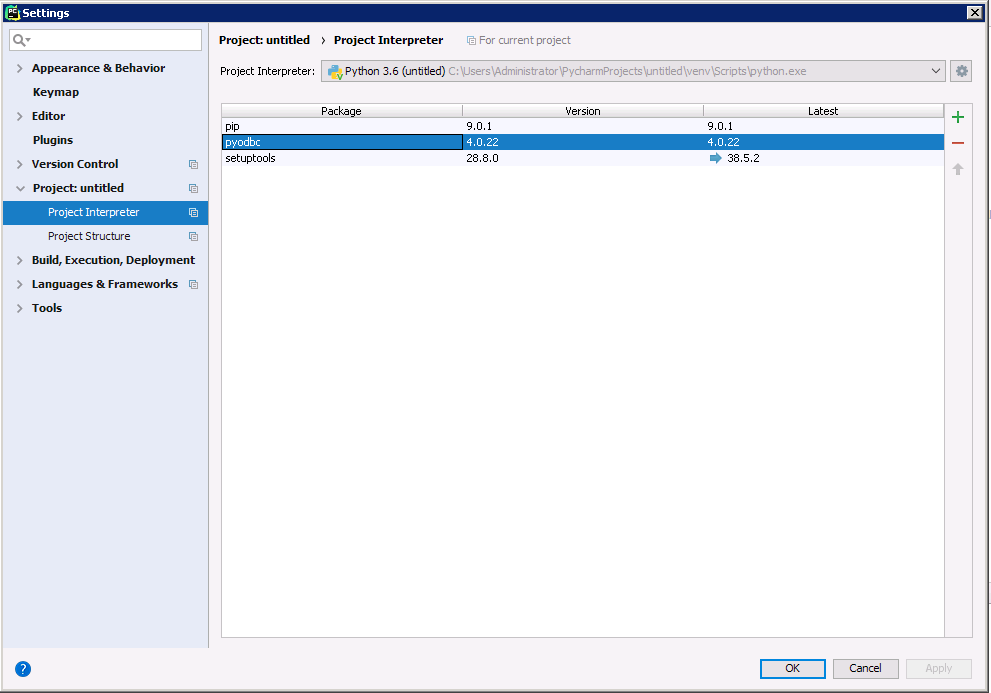Discover how a bimodal integration strategy can address the major data management challenges facing your organization today.
Get the Report →Using the CData ODBC Driver for Databricks in PyCharm
Connect to Databricks as an ODBC data source in PyCharm using the CData ODBC Driver for Databricks.
The CData ODBC Drivers can be used in any environment that supports loading an ODBC Driver. In this tutorial we will explore using the CData ODBC Driver for Databricks from within PyCharm. Included are steps for adding the CData ODBC Driver as a data source, as well as basic PyCharm code to query the data source and display results.
To begin, this tutorial will assume that you have already installed the CData ODBC Driver for Databricks as well as PyCharm.
Add Pyodbc to the Project
Follow the steps below to add the pyodbc module to your project.
- Click File -> Settings to open the project settings window.
- Click Project Interpreter from the Project: YourProjectName menu.
- To add pyodbc, click the + button and enter pyodbc.
- Click Install Package to install pyodbc.

Connect to Databricks
You can now connect with an ODBC connection string or a DSN. See the Getting Started section in the CData driver documentation for a guide to creating a DSN on your OS.
To connect to a Databricks cluster, set the properties as described below.
Note: The needed values can be found in your Databricks instance by navigating to Clusters, and selecting the desired cluster, and selecting the JDBC/ODBC tab under Advanced Options.
- Server: Set to the Server Hostname of your Databricks cluster.
- HTTPPath: Set to the HTTP Path of your Databricks cluster.
- Token: Set to your personal access token (this value can be obtained by navigating to the User Settings page of your Databricks instance and selecting the Access Tokens tab).
Below is the syntax for a DSN:
[CData Databricks Source]
Driver = CData ODBC Driver for Databricks
Description = My Description
Server = 127.0.0.1
Port = 443
TransportMode = HTTP
HTTPPath = MyHTTPPath
UseSSL = True
User = MyUser
Password = MyPassword
Execute SQL to Databricks
Instantiate a Cursor and use the execute method of the Cursor class to execute any SQL statement.
import pyodbc
cnxn = pyodbc.connect('DRIVER={CData ODBC Driver for Databricks};Server = 127.0.0.1;Port = 443;TransportMode = HTTP;HTTPPath = MyHTTPPath;UseSSL = True;User = MyUser;Password = MyPassword;')
cursor = cnxn.cursor()
cursor.execute("SELECT City, CompanyName FROM Customers WHERE Country = 'US'")
rows = cursor.fetchall()
for row in rows:
print(row.City, row.CompanyName)
After connecting to Databricks in PyCharm using the CData ODBC Driver, you will be able to build Python apps with access to Databricks data as if it were a standard database. If you have any questions, comments, or feedback regarding this tutorial, please contact us at [email protected].






